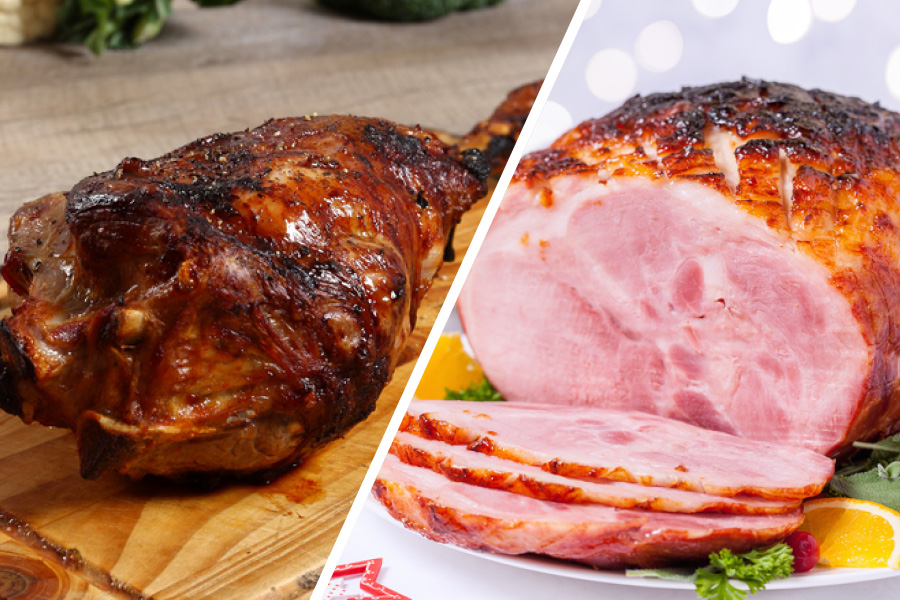
by Grillers Gold | BBQ, Grilling, Holiday
Lamb or ham? That is the question.
Does your family put a leg of lamb at the center of the Easter table every spring?
Keep up the tradition but update it, too, by grilling your leg of lamb.
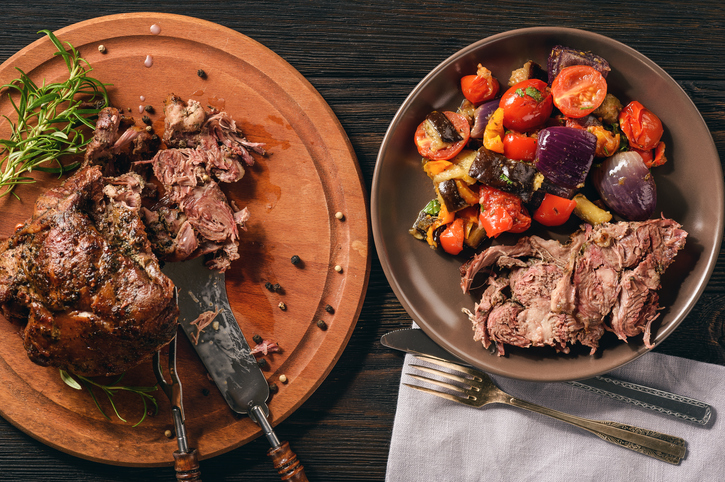
Methods of cooking lamb
- Many top chefs strongly encourage boning the leg before grilling. Butterflying is the most common suggestion. Leave it to your butcher to carefully separate the meat from the bone while keeping the main pieces connected. Then the meat is spread out in one piece, like a butterfly opens its wings. Try this recipe here.
- Instead of butterflying a boned leg of lamb and cooking it whole, slightly more ambitious home cooks carefully cut along the four natural muscle separations, which are visible, and pull the four pieces apart. Grilling the lamb this way contributes to the most delicious crust, makes it easier to determine the doneness of pieces of different thickness, and simplifies carving. Try this recipe here.
- For a simpler approach, grill the leg bone-in. Because this cut is so thick, it requires slow cooking over indirect heat – perfect for the wood pellet grill. Try this recipe here.
If your family typically cooks ham for the holiday, this year, try smoking one for yourself.
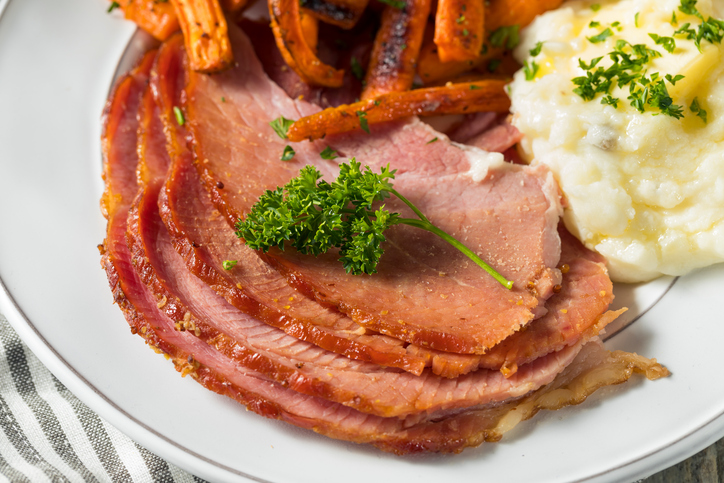
Learn how at HowToBBQRight.com Here’s what these savvy smokers say:
“You can indeed smoke a ham from scratch. It’s a pretty interesting process, involving brining for 12 to 14 days, among other things. If you want to save the time but want to add your own delicious smoked flavor in your own backyard, start with a pre-cooked ham.”
The site’s Malcolm Reed offers this great recipe (also shown here in video) to get the juices flowing. Malcolm combines a pre-cooked ham, a homemade sweet glaze, and an expedited smoking technique. Yum.
Malcolm adds this tip:
“Since we’re essentially “double-smoking” the ham, you should stay away from using stronger woods like Hickory or Oak. These will easily overpower the natural flavor of the ham. Place the ham on the smoker and check it every hour. If the outside starts to look a little dry, use some of the glaze for basting.”
The entire cooking time should take about 2 ½ – 3 hours.
Whether you choose lamb or ham, enjoy a great grilled holiday.
BACK TO BLOG
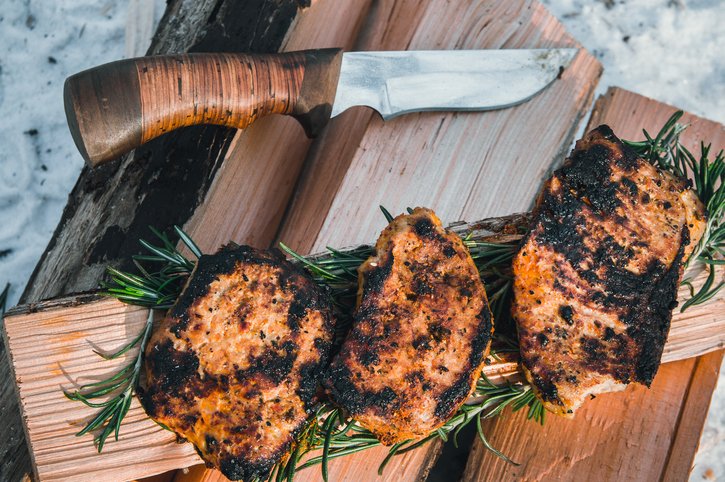
by Grillers Gold | BBQ, Featured, Grilling
From the fine Floridians at Grill Junkie, here’s a whole lot of hot info on grilling and smoking in cool spells. Yes, even in Florida, wind and weather can challenge the outdoor cook. You need to make adjustments to help ensure success. Read this excerpt, check the forecast, and get ready to BBQ with attitude all year ‘round.
The Prime Directive: Keep your BBQ hot enough to smoke, no matter how cold it is.
Smoking in cold temperatures presents several challenges. When operating a charcoal, gas or wood-fired backyard smoker, the weather is always something you need to pay very close attention to. When temperatures are very low you need to be especially careful. Reaching and maintaining ideal smoking temperatures can be difficult at best, and very hard if the wind is blowing. Metal smokers are particularly challenging because the metal acts to conduct the heat quickly away from your BBQ, grill or smoker.
Temperature
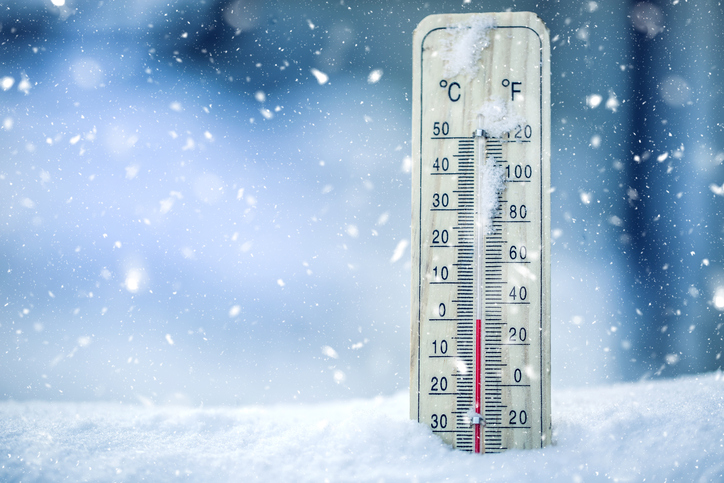
The first thing to imagine is the temperature difference. On a nice warm summer day, you might find that your smoker, sitting in the sun, has an internal temperature around 100° F. without a fire in it. Open the lid to get things ready and maybe it cools down to 85° F. If your target temperature is 225 degrees F. then you need a fire that will increase in smoker temperature by 125-145° F. If, on the other hand it is a cold, overcast day the internal temperature of your smoker could be 35° F, meaning you need to increase the temperature by 190° F. This is near twice the temperature difference. This means that you will have to have better temperature control, a hotter fire, and more fuel than usual on hand.
Wind

Now we need to take into account the wind. The most important thing about wind is the direction relative to your smoker. Some smokers, like the large offset smokers, have a definite airflow path. Air comes into the smoker through the firebox and moves across the cooking chamber and out the stack. If the wind is blowing in this direction the increased airflow will burn your fuel faster and can cause high-temperature spikes. This means keeping the vents closed down more than normal. If the wind is going in the other direction it can stop the airflow entirely and keep the heat out of your cooking chamber. It is best to let the wind add to the airflow and not stop it so if possible position your smoker so that the wind is blowing in the direction of the natural smoker airflow. It is very important to keep an eye on the wind as well as your smoking temperature.
Precipitation
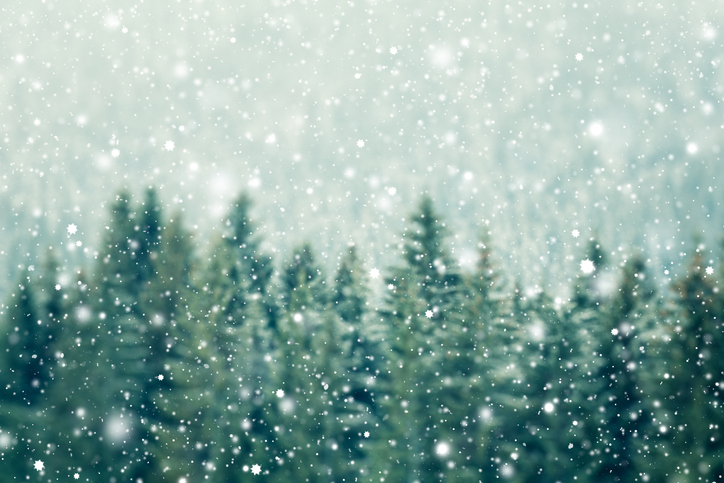
Of course, it’s very difficult to smoke in heavy rain but cold weather also brings the occasional unanticipated light rain or snow. When water hits your smoker it is going to evaporate. Evaporation pulls heat from your smoker. If, during the course of a smoke you find some rain or snow falling it is time to open up the vents, getting things stoking, and bring up the temperature to offset this heat loss. Keep a close eye on it and you should be okay.”
Read more about the technical aspects of smoking and cooking on a wood pellet grill in this article about Indirect Heat.
BACK TO BLOG
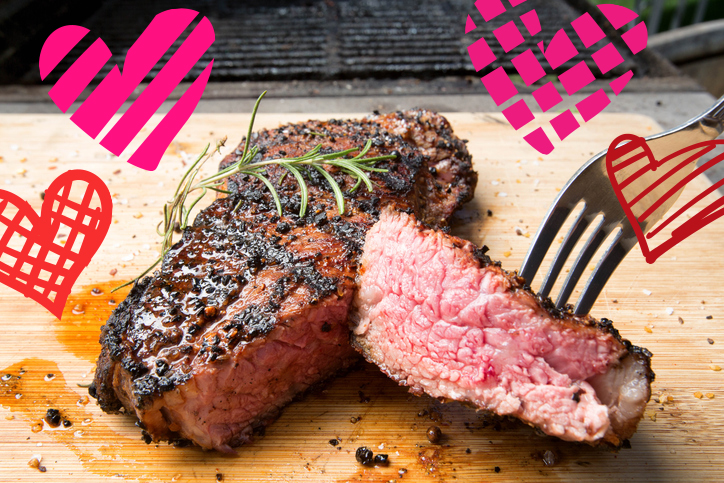
by Grillers Gold | Grilling, Holiday
Making Valentine’s Day dinner at home, lovingly handcrafting a very special meal, is about as romantic as it gets. Here are some heartwarming choices for the main dish.
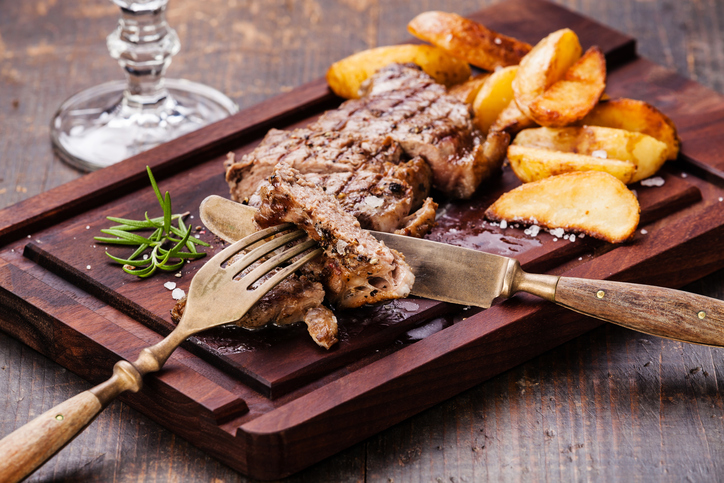
If you want steakhouse style, buy high-quality, thick New York strips, with their beautiful marbling, tenderness, and flavor. Remember not to trim the fat; leaving it on contributes to both taste and moisture. Grill them with care and attention, per Peter Jautaikis, author of The Wood Pellet Smoker & Grill Cookbook. Jautaikis recommends steaks 1-1/4” to 1-1/2” thick, cooked 2 to 3 minutes per side on a grill preheated to 450 degrees.
If you have more time to put into your culinary efforts to celebrate your true love, smoke a flavorful tri-tip roast. Marinate overnight, prep the grill, and plan on cooking 2 hours for a 2 ½-3 lb. roast. It’s another great recipe from Jautaikis.
Now, light the candles, set an especially elegant salad out on the table, make sure the chocolate dessert is ready to serve, and pour two glasses of your favorite red wine.* For the BBQ lover, it’s the perfect occasion.

*Want some suggestions for red wine pairings that are as perfectly suited as you and your mate? For grilled strip steak, a robust wine with the tannins, acidity, and alcohol to cut through the meat’s fat is the ideal; look for Cabernet Sauvignon or Zinfandel, according to the blog at wines.com. And Fiona Beckett’s blog, Matching Food & Wine, enthusiastically recommends a lush, ripe Australian Shiraz with smoked beef.
View related posts
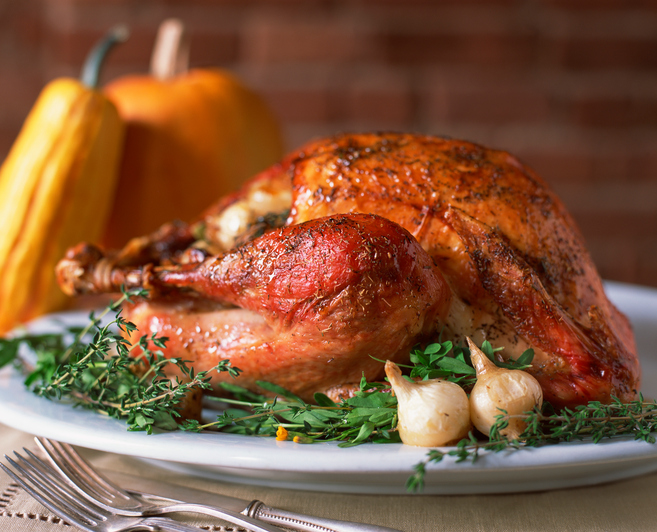
by Grillers Gold | BBQ, Flavor, Grilling, Holiday
Here are two things about wood pellet grills that should fill your heart with gratitude this Thanksgiving:
1. True indirect heat, just like your oven.
2. Great taste unlike any appliance in your kitchen can deliver.
Do something different with that bird this Thanksgiving!
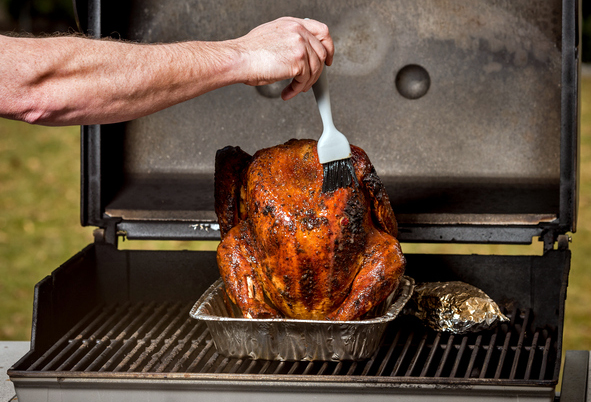
Roasting your Thanksgiving bird in the oven is the traditional way to go. But if you’re looking to take Thanksgiving to the next level, why not riff on tradition this year, using your wood pellet grill’s special super powers? You can get that crispy-skin-on-the-outside/juicy-meat-on-the-inside goodness, and fantastic flavor, too.
Indirect heat isn’t just something any grill can deliver. A wood pellet grill, however, controls temperature and circulates heat evenly throughout. There are no hot spots, no undercooked areas, no variation from one place in the bird to the next. It’s all good with indirect heat!
What’s even more amazing is the flavor. Wood pellets add a smoky taste that’s special. And simply delicious.
Let’s get cooking!
The farm-to-table experts at the University of Illinois Extension spell out simple turkey-on-the-grill guidelines here. And depending on how big your grill is, you can also fit in a few baking dishes on the side. Anything that you could cook in the oven, you can bake on a wood pellet grill. Try this scalloped potatoes recipe for a classic Thanksgiving side. You can also check out some tasty autumn vegetable dishes here for more inspiration!
Smoky flavor for everyone
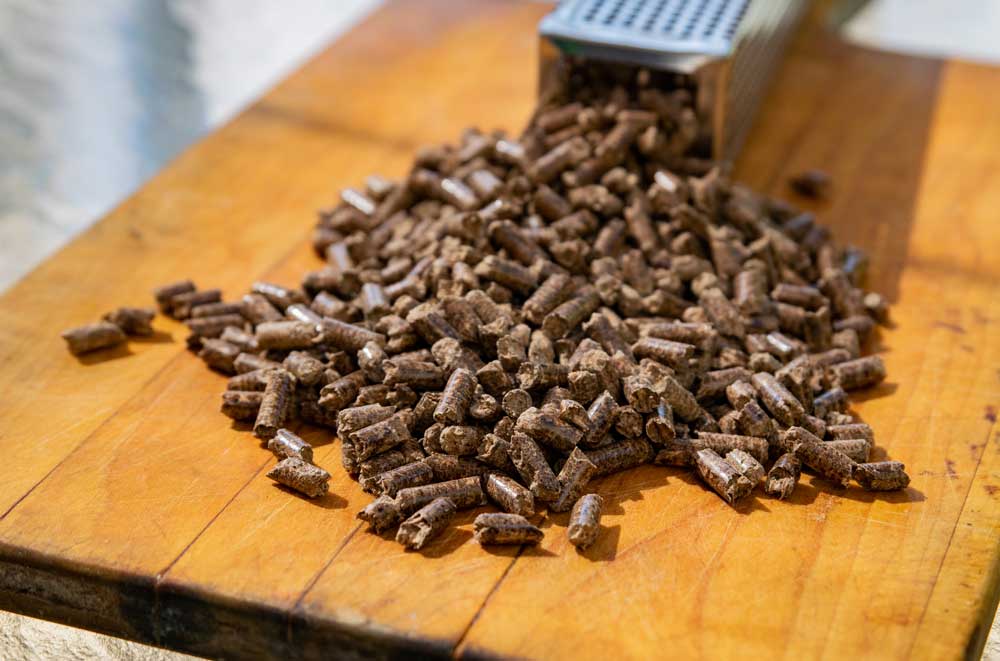
If you’re one of those confident outdoor cooks who knows how to get indirect heat on your conventional grill, you can get smoky wood pellet flavor for your bird with a smoker box or tube. Thanksgiving is a great time to get smokin’ without a wood pellet grill.
Enjoy the holiday and thanks for reading!
BACK TO BLOG
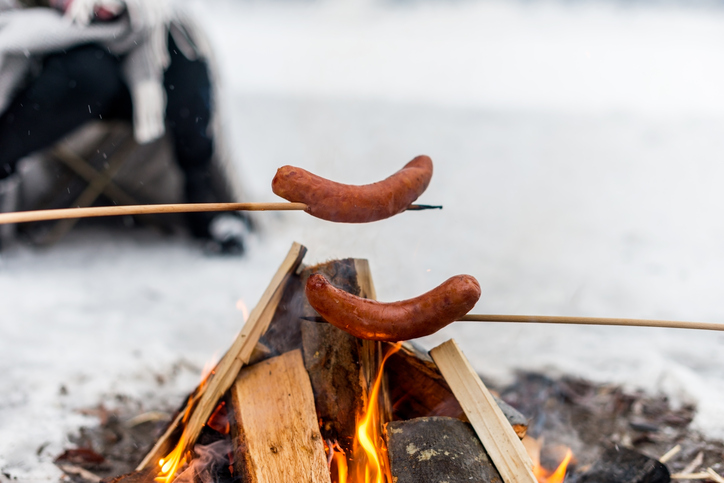
by Grillers Gold | BBQ, BBQ Pellets, Grilling
While America justly claims barbecue as its own today, there’s history to this cooking technique. And it goes way back in time – to the days when cavemen (and women!) discovered the kind of miraculous combination of meat and heat. The idea of roasting food over a fire was embraced by many ancient civilizations around the globe.
First, let’s travel back about 200,000 years.
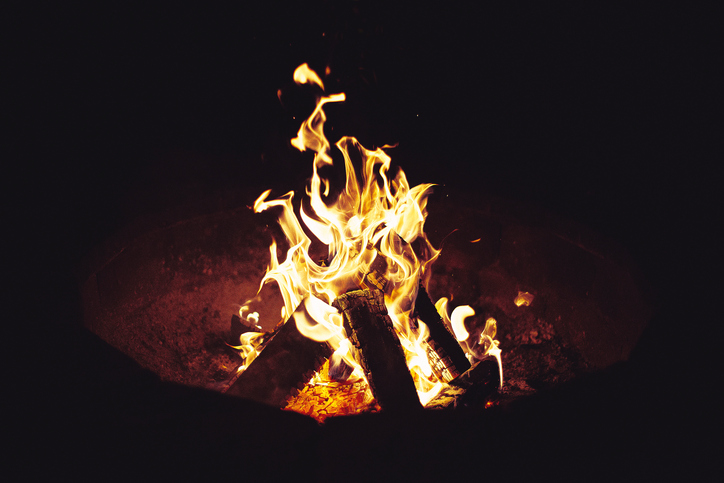
That’s the age of the cooking artifacts found near Carmel by archaeologists at Israel’s University of Haifa. The evidence there tells us that large, meaty hooved animals, such as cattle, deer, and boars, were on the menu. Our ancestors would have probably first just thrown the meat into an open fire, then eventually discovered the effectiveness of green, inflammable wooden skewers to hold the meat over the flame.
Things inevitably got more sophisticated.
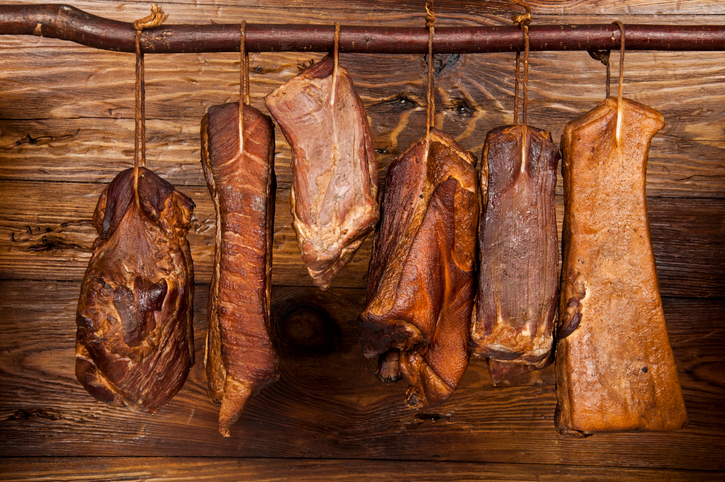
(It’s a long way from a green stick to a wood pellet grill!) Wooden frames held larger pieces meat far enough away from the flame so as not to incinerate dinner and cookware alike; this approach mandated slower cooking times and added the flavor of smoke. With that taste came preservative qualities: smoke reduces the moisture that allows bacteria to grow, so perishable meat could be smoked, dried and salted for future consumption. In ancient China, India, and Japan, smoking food has been popular for thousands of years. Ceramic urns for smoking are called kamados in Japan and tandoors in India.
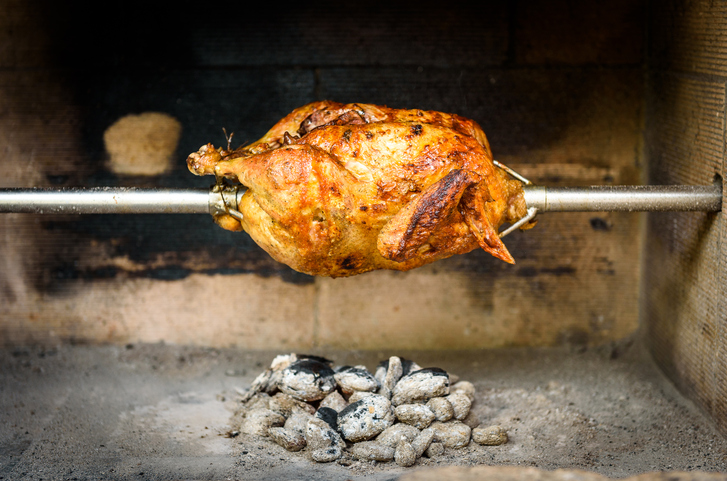
The use of spits and metal implements in ancient Greece is documented in Homer’s Iliad and The Odyssey. Then there’s the gridiron, the precursor to today’s grill, which was developed early in the Iron Age. Note that the Greeks basted the meat in wine and salt, and feasted outdoors. Sound familiar?
Look in the Hebrew Old Testament books of Exodus and Leviticus for references to burnt offerings of animals. The smoke rose to God, but the meat of the animals was eaten by Moses and company.
Fire plus food – that’s the simple, but absolutely brilliant idea.

No wonder barbecue has endured, and pleased the world’s palates, through the ages. If you’re looking to add even more flavor to your BBQ, check out our bbq series, Sauces of Honor: Chicken and Sauces of Honor: Pork.
Thanks to our source for these historical facts, amazingribs.com. If you want to dig into a great big fun serving of their barbecue scholarship, visit the site and check out the best-selling Meathead: The Science of Great Barbecue and Grilling, authored by website founder Meathead Goldwyn.
Come back to this blog for more history lessons in the months ahead!
BACK TO BLOG
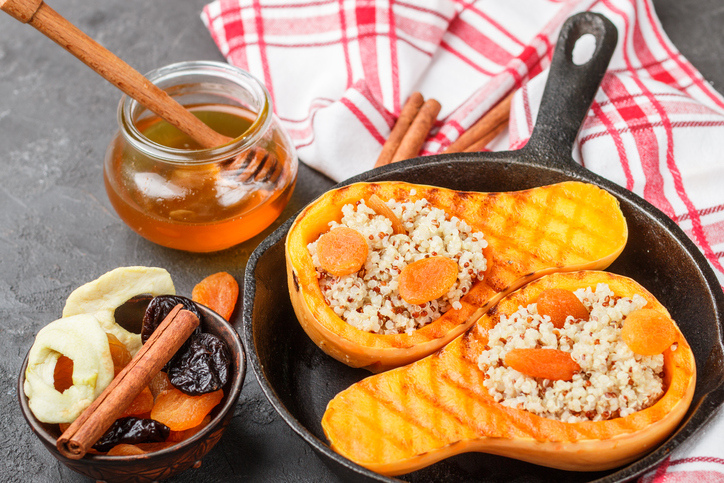
by Grillers Gold | Flavor, Grilling
Take advantage of great weather, cook with easy cleanup after work and school, enjoy menus that reflect the abundance of the harvest. What’s not to love about grilling in autumn?
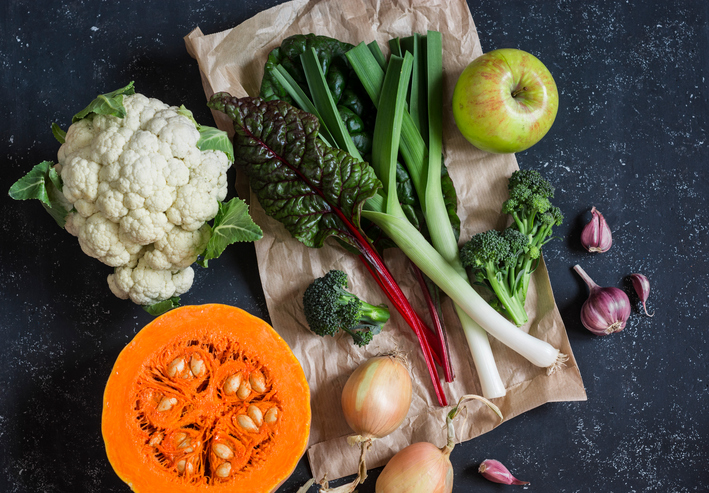
Side dishes get really interesting during fall. It’s harvest time, and the farmer’s markets are simply overflowing. The choices, flavors, colors and textures are never better than in the autumn. What’s especially abundant?
- Apples and cider
- Squash
- Sweet potatoes
- Figs
- Pears
- Pumpkins
- Cauliflower
- Sage leaves
Here’s a sample of recipes for a dream fall dinner, with a leading part played by your grill.
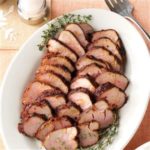
Pork’s taste and texture provide a perfect ‘canvas’ for an array of flavors. As the temperature drops, we crave more assertive, warming, spicy notes. And there’s not much that’s more popular on the grill than pork. Yes, this recipe has it all for autumn grilling.

Grilled fruit always adds great taste. And this apple salad features dressing made with another seasonal ingredient, apple cider.

Get the microwave going for this sweet, satisfying side dish to accompany your grilled goodness.
BACK TO BLOG






















